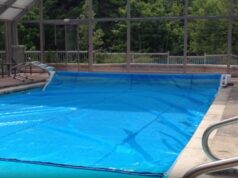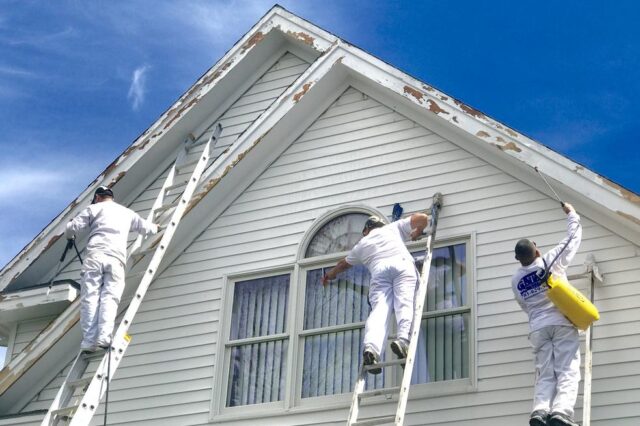
Exterior painting is something that is less commonly taken on by DIY’ers compared to interior decorating as it can often have more associated problems. Due to this, we have compiled the 5 most common mistakes made so you tackle your next exterior painting project with confidence.
1. Not using a primer
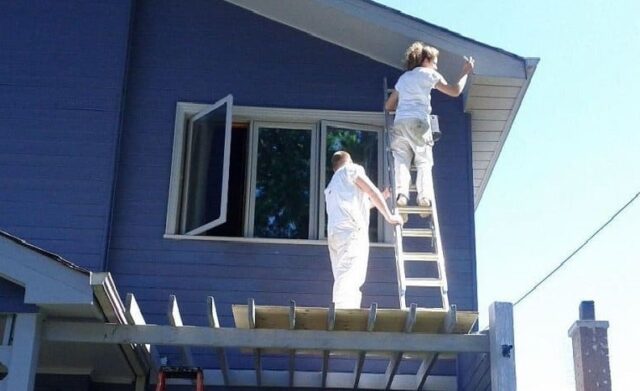
There is often a lot of confusion around what a primer is and when you need to use one, as usually interior painting occurs on already painted surfaces. When it comes to exterior surfaces, if it is already painted and the paint is sound, you do not need to use a primer.
If the surface is bare, such as brickwork or stone, more often then not you must use a primer. But why? Well, primers help the paint adhere to the surface, creating a coating for the paint to bond with.
Exterior surfaces vary with their requirements, which is why exterior walls, wood & UPVC all have specially designed primers that match the requirements of the substrate. For example, wood is very porous, which causes a top layer of paint to soak into the wood, leaving an uneven finish. Before you begin painting, make sure you check whether the exterior paint you are using requires a primer.
2. Not using a waterproof masonry paint
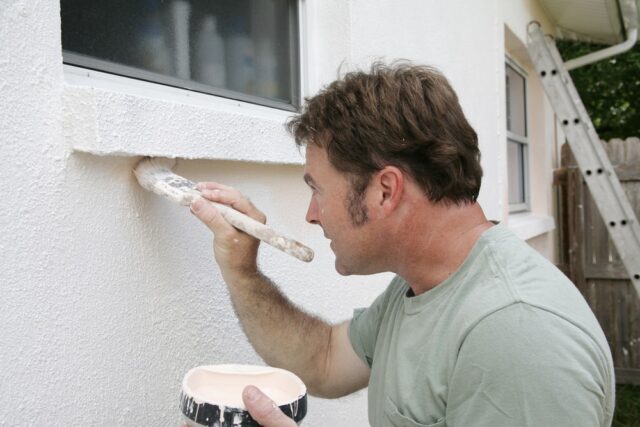
Painting the outside of your house is a big project. It can take a lot of time & money, which is why it is important to do it correctly. There is a lot of misinformation regarding what masonry paint you should use, which leads to many people making costly errors.
Masonry paint varies wildly in quality, with some masonry paints costing £20 for 10L and some costing over £100 for 10L. The reason for this is that manufacturers recognise that people can be very price conscious, and therefore they develop paints as cheaply as possible.
At the bottom of the scale is very cheap masonry paints that are often sold by large DIY stores. These are often in large quantities and offer somewhere between 1-3 years performance. A step up from these are where many of the large paint manufacturers such as Dulux & Crown are placed, which have masonry paints that last between 5-10 years.
These paints, along with the cheap masonry paints are not waterproof, they are simply designed to withstand harsher conditions than their interior emulsion counterparts. Finally a new wave of technology has led to waterproof masonry paints, which repel water off the exterior wall, allowing it to withstand weathering for over 25 years.
These masonry paints last so long because their waterproof abilities, which protects the paint from water ingress, which is the primary cause of exterior paint deterioration. By preventing moisture from being soaked up by the exterior wall, the paint will not peel or flake, remaining pristine for years to come.
This also prevents damage to the interior walls such as damp, as this is often caused by moisture from weathering transferring from an exterior wall into an interior wall. We would recommend Emperor Paint who offer a lifetime guarantee on their waterproof masonry paint.
3. Painting in the wrong conditions
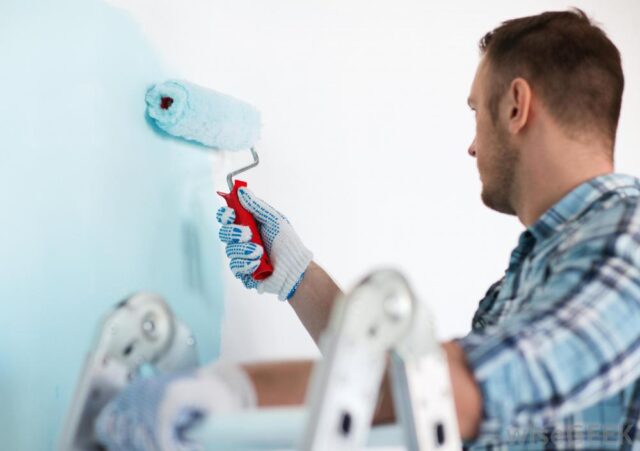
Exterior painting brings the joys of the weather with it, which can be a real problem for many projects. Paint is not designed to be applied in wet conditions, so it is crucial that you plan ahead and make sure that you can complete your project while it is dry.
If you have began painting when the weather turns on you then it is important to act fast. Try and cover the areas as quickly as possible with any plastic draping or covers. If the paint begins to run off the wall, then it is best to bite the bullet and wash it off any surfaces that shouldn’t be painted while it is wet.
If you have completed your painting project as the heavens open, especially if you are using a waterproof exterior paint, then generally you should be fine. These paints usually dry quite quickly and should not be affected by light rain. One final consideration is painting in very hot conditions.
Yes, it is not just rain that is your enemy, but the sun is too! Painting in very hot conditions is not recommended as the paint you are applying will dry before you get a chance to finish your coat. This results in flashing, or lines in the paintwork as the paint has not had a chance to dry uniformly.
4. Painting over cracks
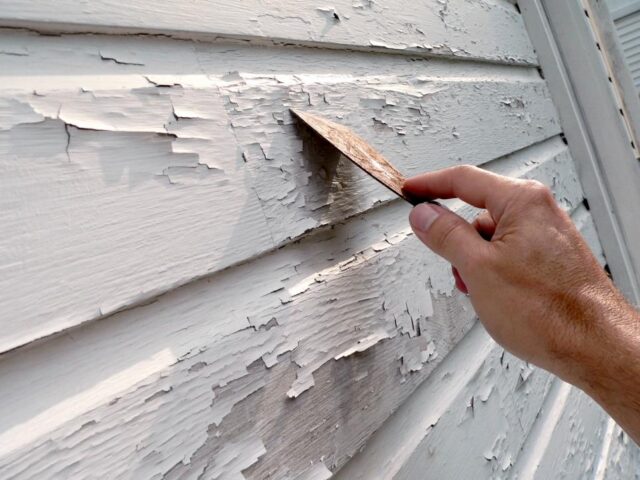
Painting over a non-perfect surface can be tempting we know, but it is not worth it. If the previous paint is cracked or peeling, then it is a sign of a previous problem, and simply painting over it is not going to solve anything.
Whether it is peeling paint on an exterior wall or cracked wood, this is usually indicative of moisture problems, which is paints worst nightmare. Taking time to get to the bottom of what is compromising the exterior surface will mean that you can resolve the problem and end up with a sound surface that will continue to look great long-term.
Fill any cracks, seal or prime any bare areas once the peeling paint is removed and you should be good to go, unless there is a much larger problem! Nevertheless, it is worth the time and effort if you want to make sure your hard work stands the test of time.
5. Not protecting other surfaces
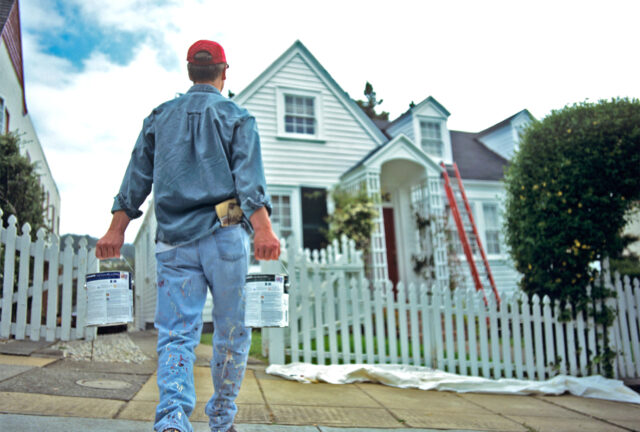
Simply trying to start the exterior painting project without protecting other surfaces is a recipe for disaster. Exterior paint is often tough & durable and isn’t always easy to clean off.
Put down a dust sheet on the floor, apply masking tape & even put newspaper around drainpipes and other parts of exterior trim to avoid making your life harder than it has to be.
Thank you for reading our top 5 common mistakes when exterior painting. We hope they have given you some things to think about & remember, take your time & enjoy the project!



